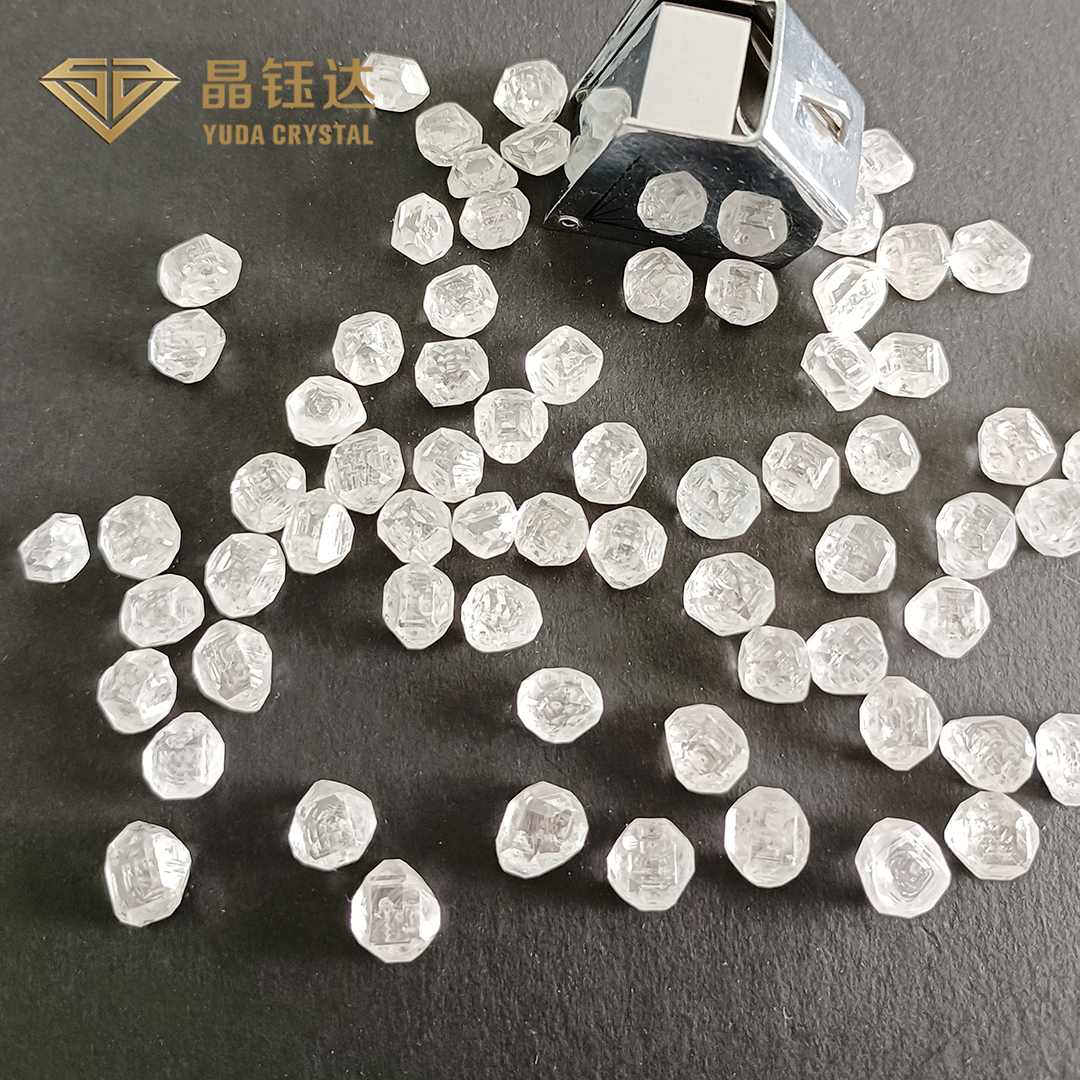Fancy White DEF Color VVS VS SI Clarity Rough HPHT Lab Grown
Diamonds
Lab Grown Diamonds Description
Cultured diamond (synthetic diamond) is a kind of diamond crystal
synthesized by scientific method to simulate the crystallization
conditions and growth environment of natural diamond artificially.
Look from the product attributes, foster diamond and natural
diamond are crystals of pure carbon, has exactly the same physical,
chemical and optical properties, transparency, refractive index,
dispersion, etc as natural diamond, in brightness, luster, color,
flashing fire completely the same as the natural diamond jewelry
features such as cultivation and natural mineral diamonds are real
diamonds, Different in nature from the imitation of diamond mossan
(carbon silica) and water diamond (cubic zirconia).
Parameters Of Lab Grown Diamonds
| Product Name | Synthetic (Lab grown) diamond |
| Material | Lab-grown |
| Color | D-H |
| Size | 0.003PCS/CT-7CTS/PC |
| Grade | VVS VS SI |
| Used | Jewelry (necklace,ring) |
| Application | For Cutting Lab Grown Loose Diamonds |
| Place Of Origin | Zhengzhou, China |
Characteristics Of Lab Grown Diamonds
| The Difference Between Lab Diamond And Natural Diamond |
| Attribute | Lab Grown Diamonds | Natural diamond | Distinction |
| Chemical composition | C(carbon) | C(carbon) | No |
| Refractive index | 2.42 | 2.42 | No |
| Relative density | 3.52 | 3.52 | No |
| Dispersion | 0.044 | 0.044 | No |
| Hardness value | 90 GPA | 90 GPA | No |
| Thermal conductivity | 2*103 W/M/K | 2*103 W/M/K | No |
| Thermal property | 0.8*10-6 K | 0.8*10-6 K | No |
| Light transmittance | DEEP UV TO FAR TR | DEEP UV TO FAR TR | No |
Resistivity | 1016 OHM-CM | 1016 OHM-CM | No |
Compressibility | 8.3*10-13 M2/N | 8.3*10-13 M2/N | No |
From a scientific point of view, cultivated diamonds are exactly
the same as natural diamonds, the only difference being where they
are formed.
Cultivated diamond has no difference with natural diamond in color,
granularity, clarity and other aspects, but the market price of
cultivated diamond with the same granularity and grade is only half
or even lower than that of natural diamond. According to
statistics, the retail price of cultivated diamond in 2016 is about
80% of that of natural diamond. From 2017 to 2020, this proportion
will be reduced to 65%, 50%, 50% and 35%, respectively. Lower
production costs and retail prices provide strong support for
cultivating diamonds to further expand market share.
In the global diamond consumer market, the United States is the
main consumer market, accounting for 80% of the market share, China
is the second largest consumer market, accounting for 10% of the
market share, other countries accounted for 10% of the market
share.
Lab Grown Diamonds Details












